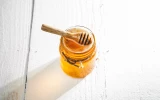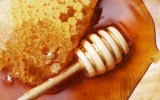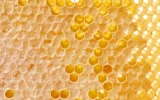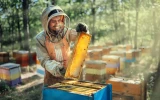How Often Can You Harvest Honey? (Honest Look)
Honey harvesting is a process that hinges on the balance between your desire for the sweet nectar and the bees' need for sustenance. As a beekeeper, you might be curious about how many times a year you can harvest honey from your beehives. This is an important question to understand, as it allows you to plan your honey collection efficiently and ensures the well-being of your bee colony.
You can generally expect to harvest honey 2–3 times per year, typically during the summer and autumn months between mid-June and mid-September. In some cases, you might be able to harvest honey four to five times in a good season, but in a bad season, it could be just once.
The number of harvests can vary depending on factors like the local climate, plant life, nectar flow, and the colony's vitality. But remember not to harvest honey during the first year of establishing your beehive, as the colony is still growing and working on its honey production. After that, in the second year, how often can you collect honey? Let's find out.
Summary
- Generally, you can expect to harvest honey twice a year, once in the summer and once in the late fall.
- The best season to harvest honey is in late summer or early fall.
- Only take the surplus honey; if the bees need it for food, it should be left for them.
- Signs to look out for before harvesting include color, consistency, aroma, debris, and taste.

On this page:
You Can Harvest Honey 2–3 Times in a Year
Seasonal harvests of honey
As a beekeeper, you can typically expect to harvest honey two to three times a year, based on several factors such as the size of your hive, the climate, and the surrounding plant life. The best time to harvest honey is usually between mid-June and mid-September, during the warmer months when bees are most active and plant life is abundant.
During this time, you should monitor your hive regularly to ensure that the honey is capped. Capped honey means that the bees have sealed it with wax, indicating that it has reached the right moisture content and is ready to be harvested.
It's also essential to consider the nectar flow in your area, as this influences the honey production capacity of your beehive. When there is a strong nectar flow, your bees will collect more nectar and produce honey more quickly.
Continuous harvests of honey
For more experienced beekeepers, continuous harvesting may be a viable option. Continuous harvesting involves progressively removing honey frames from your hive while simultaneously replacing them with new, empty frames. This method can be used to harvest honey more frequently throughout the year, although it still depends on the surrounding conditions and the health of your bees.
Remember, proper hive management is crucial to ensuring that your bees have enough honey for their own needs, especially during the winter months when they rely on stored honey for survival. As a rule of thumb, always make sure your bees have enough honey left in the hive to sustain them through the winter.
To improve the efficiency of your honey harvests, consider the following practices:
- Keep track of the nectar flow in your area to optimize the timing of your harvests.
- Use an uncapping knife or other specialized tools to remove the wax cappings from honey frames efficiently.
- Be mindful when inspecting your hives, as overhandling can stress your bees and hamper their productivity.
Ideal Times to Harvest Honey
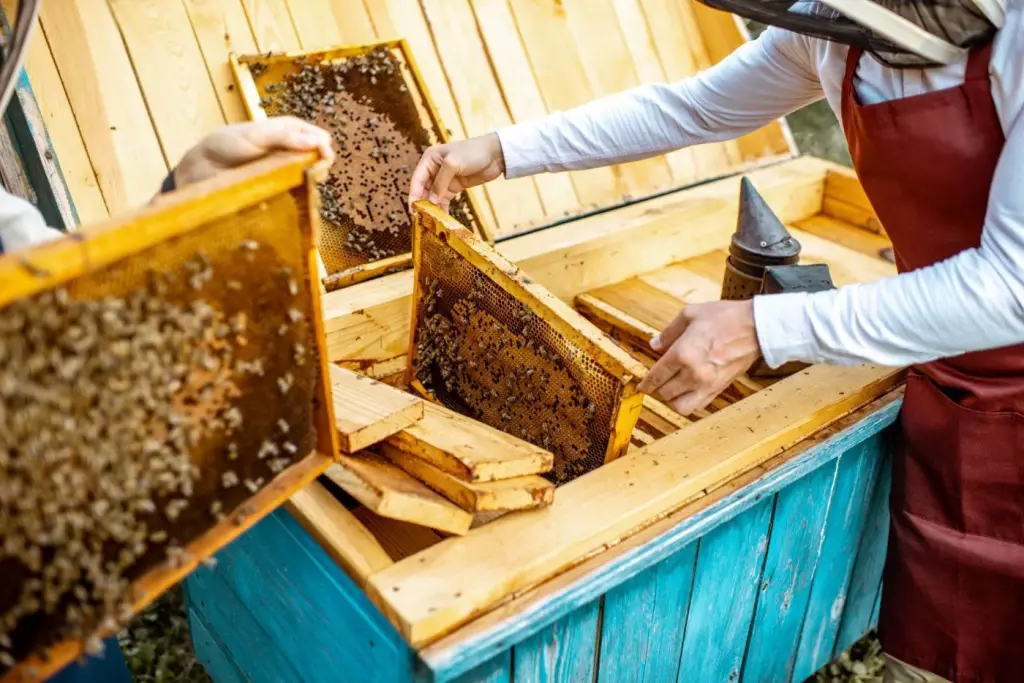
Summer harvest of capped honey
The summer months tend to be the best time for the first honey harvest of the year. During this period, bees are plentiful, and nectar flow is typically abundant in most regions. When determining the optimal time to harvest in summer, ensure that a majority of the honeycomb frames have capped honey. This indicates that the moisture content has reached an ideal level, which is usually around 18%.
Fall harvest of remaining honey
As the summer transitions to fall, you have another opportunity to harvest honey from your beehive. This second harvest allows you to collect any remaining honey while still leaving enough for your bees to survive the winter comfortably.
Keep in mind that this period is highly dependent on your geographical location and the available nectar flow. It's always crucial to prioritize your bees' wellbeing and make sure they have sufficient food supplies for the colder months ahead.
Spring is a time for monitoring your beehive
In the spring season, it's not recommended to harvest honey, especially if you have a new colony. Your bees will need to build up their honey reserves during this time, ensuring they have enough food and resources to grow their population and set a solid foundation for the rest of the year. Instead of harvesting, focus on monitoring your beehive's health and keeping an eye on its progress.
Honey Harvesting Techniques
Honey harvesting is an essential skill for beekeepers, and understanding the different methods and techniques involved can ensure that your efforts are productive and sustainable.
Traditional beekeeping uses a honey extractor
In traditional beekeeping, the most common method of harvesting honey is through the use of a honey extractor. This involves a few careful steps:
- Beehive inspection: Before you begin the harvesting process, you should inspect the beehive to ensure that the honeycomb is ripe and ready for extraction. Look for combs that are at least 80% capped with wax by the bees.
- Removing the frames: Carefully remove the selected frames from the hive, taking care not to disturb the bees or damage the comb.
- Uncapping: Use an uncapping knife or fork to gently remove the wax caps from the honey-filled cells.
- Extraction: Place the uncapped frames into a honey extractor, a spinning mechanism that uses centrifugal force to separate the honey from the comb. Make sure to collect the honey in a clean, food-safe container.
- Return the frames: Once you have finished extracting the honey, return the empty frames to the hive, allowing the bees to refill them with new honey.
Extract honey using a flow hive
A more recent innovation in beekeeping is the Flow Hive, a beehive designed to simplify the honey extraction process. Here's how using a Flow Hive works:
- Beehive inspection: Just like in traditional beekeeping, it is essential to inspect the beehive to determine if the honey is ready for harvesting. Check the rear window of the Flow Hive to monitor the progress of honey filling.
- Insert extraction tubes: When you're ready to harvest, insert the specially designed extraction tubes into the Flow Frames, which are the unique honeycomb frames of the Flow Hive.
- Turn the flow key: Use the flow key provided with the hive to open the channels within the frames, allowing the honey to drain into the extraction tubes.
- Collect the honey: As the honey flows from the tubes, you can collect it directly into jars or containers without any further processing required.
Tips to Maximize Honey Production
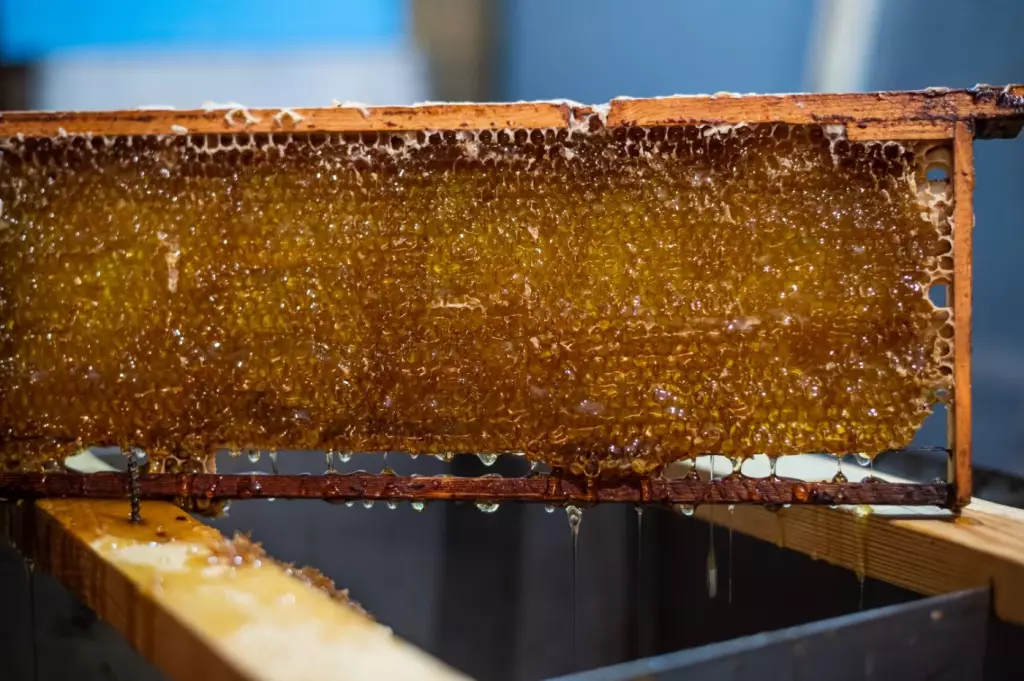
Support bee colonies with nutrition and hydration
To increase your honey harvest, it's vital to support your bee colonies adequately. Provide enough nutrition and hydration to ensure a healthy colony. The healthier the bee colony, the more honey they'll produce. Some ways to help your bees include:
- Supplementing their diet with sugar syrup or pollen patties during times of low nectar flow.
- Planting flowering plants near the hives that bloom throughout the year provides a continuous source of nectar.
- Ensuring a clean, fresh water supply is accessible for your bees to drink.
Manage your beehives effectively
Proper hive management is crucial to maximizing honey production. Keep the following points in mind to maintain a well-functioning hive:
- Regular inspections: Inspect your hives frequently for any abnormalities, such as pests or diseases, and take appropriate measures to rectify them.
- Hive ventilation: Ensure proper ventilation within the hive to help remove excess moisture, which can prevent diseases and help bees regulate temperature.
- Efficient use of space: Be mindful of how you use the space inside the hive. Arrange the frames in a way that promotes honey production and provides the bees optimal room for expansion.
- Swarm prevention: Manage your hive to reduce the chances of swarming, as a swarm can significantly reduce honey production. Techniques can include providing additional brood boxes, giving enough space for the queen to lay eggs, and conducting regular inspections.
- Timely honey harvest: Harvest honey two to three times a year, ideally during the summer and autumn months. Avoid harvesting too late in the season, allowing bees to have enough honey stored for winter.
Potential Risks of Overharvesting Honey
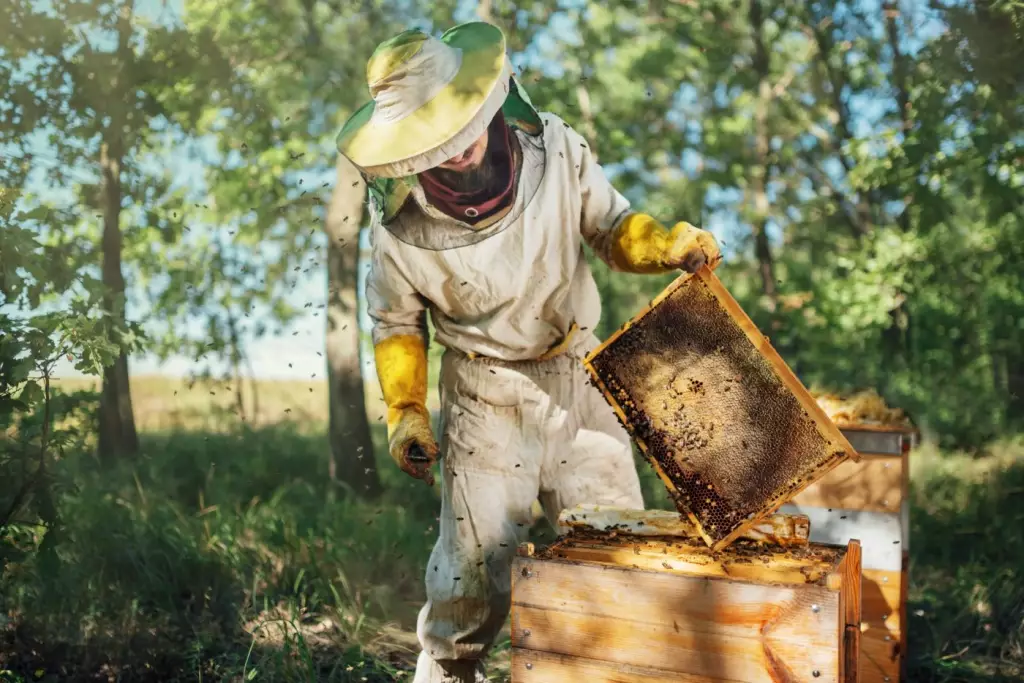
The colony starves if you don't leave enough honey
When you harvest honey too frequently, it increases the risk of colony starvation. Bees rely on the honey they produce as a crucial food source, especially during the winter months. If you take too much honey from the hive, they might not have enough to survive during times when there is a scarcity of forage.
To prevent this issue, ensure that you leave enough honey for the colony to consume. The ideal amount will depend on your specific location and the season. It's essential that you regularly monitor your hive to determine how much honey to harvest without jeopardizing the bees' wellbeing.
Bees get stressed if you keep taking their honey
Overharvesting can also lead to stressed bees, as it disrupts their natural routines and resilience. When bees feel stressed, their overall health suffers, making them less productive and more susceptible to diseases and pests. This puts your entire colony at risk.
To maintain a healthy colony, limit the frequency of honey harvests to avoid stressing the bees. Additionally, handle the hive with care during inspections, as rough treatment can harm the colony and induce stress.
Diseases increase in the hive if you take too much honey
Another consequence of overharvesting honey is the increased risk of diseases and pests within your hive. A stressed colony is more vulnerable to diseases such as American foulbrood and Varroa mites. If not appropriately addressed, these diseases and pests can decimate your entire colony and even spread to neighboring hives.
Preventative measures are important to maintain a healthy colony. Regularly inspect your hive for signs of diseases and pests, and take action if you notice any issues. Make sure to treat your hive for Varroa mites at least once per year, and remove any infected frames to control the spread of diseases.
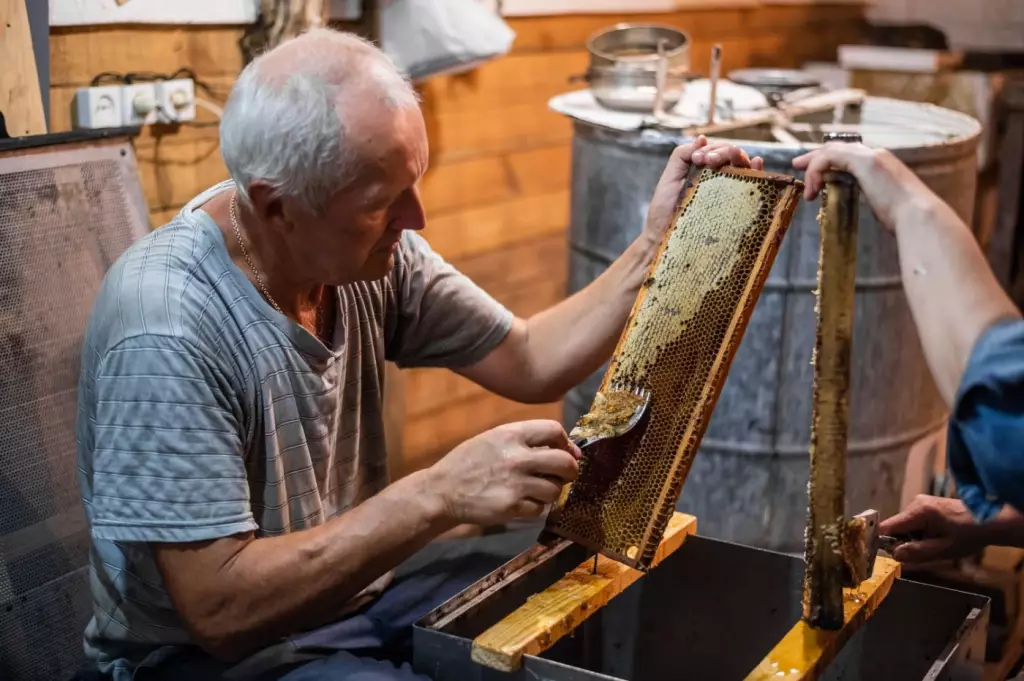
How to harvest honey
Here’s a step-by-step guide on how to harvest honey in the simplest way possible:
- When harvesting, beekeepers should use a sharp knife to cut away the wax cappings from each frame.
- The frames are then placed in an extractor, which spins the frames at a high speed and forces the honey out of the comb.
- The honey is then strained to remove any wax and debris and placed in jars.
- After the honey is harvested, it is important to leave the bees with enough honey to make it through the winter.
- If the bees have not collected enough nectar to prepare for winter, the beekeeper may need to supplement their diet with sugar water or other food sources.
